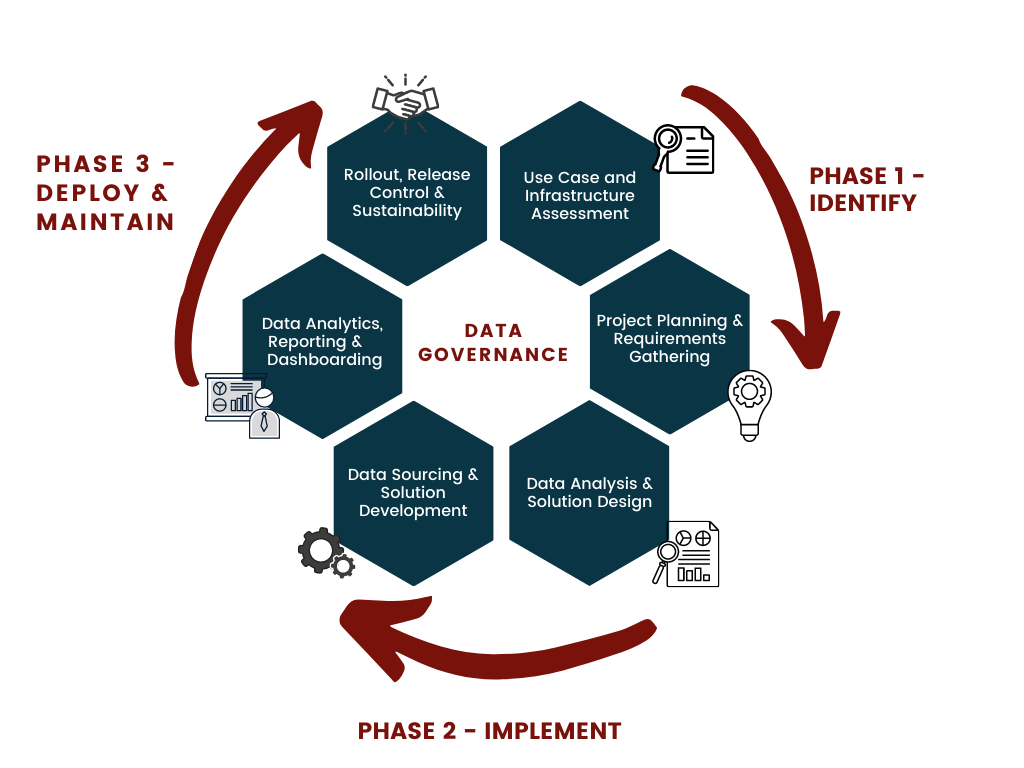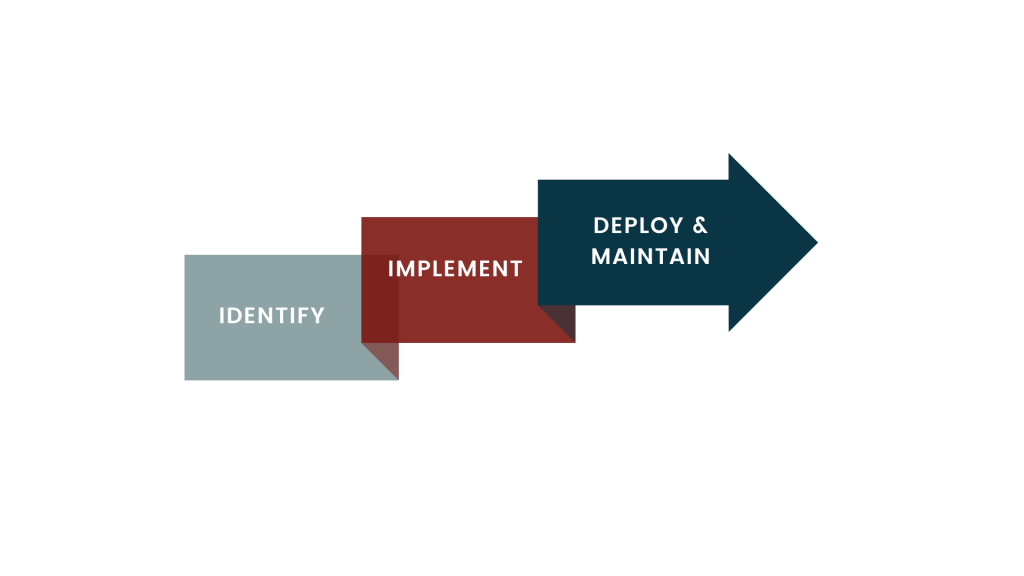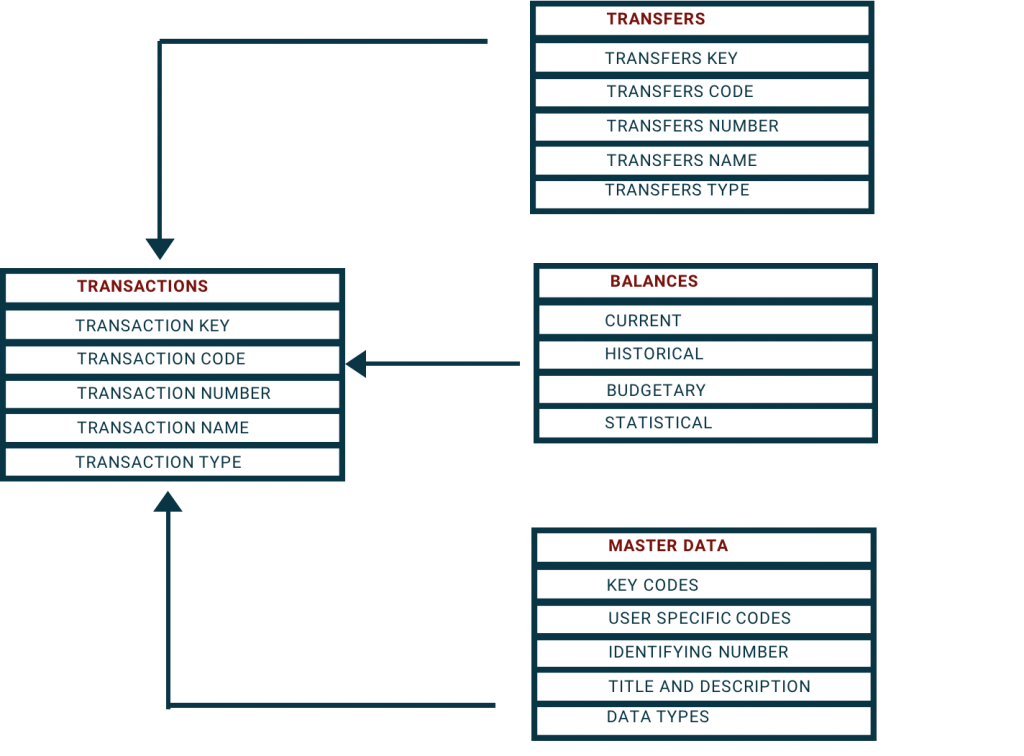Data Management and Analytics
Data management is a capability that every organization needs. It may just be the lifeblood that unlocks the keys to your business. Data can help nurture product intelligence, market understanding, and provide a strategic edge in today’s highly competitive global environment. The strategic Data Consulting Services that ZPro provides are full-service implementation solutions that can help you define and implement a complete data management strategy in even the most demanding organizational environments. We pride ourselves on building sustainable, scalable, and flexible data management solutions that unlocks the data you truly need.
How can ZPro Solutions help with your Data Management Program?
Learn how to build an enterprise data management program
See a path to simpler, more efficient and more effective data access
Unlock the power of advanced analytics to enhance your strategic needs
Project Approach


Data Governance
Data is arguably the most important asset that organizations have. Data governance helps to ensure that data is usable, accessible and protected. Effective data governance leads to better data analytics, which in turn leads to better decision making and improved operations support. ZPro Consultants will assist in all facets of Data Governance from process to collection to sustainability.
Identify Stages
- Business justification
- Develop Data Maturity Model
- Cost-benefit analysis
- Risk assessment
- Business case assessment
- Begin Project Planning, Staffing, and Budgets
Technical Infrastructure Evaluation
- The hardware platform
- The middleware platform
- The database platform
- Technical infrastructure evaluation
Non-Technical Infrastructure Evaluation
- Enterprise architecture conceptual model
- Enterprise standards
- Non-technical infrastructure evaluation
- Organizational Readiness
- Defining the data management project
- Planning the business intelligence/data warehouse project
- Project planning activities
- Staffing and resourcing
- Budgeting
- General business requirements
- Project-specific requirements
- Project requirements definition activities
- Stakeholder Approvals
Implement Stages
- Business-focused data analysis
- Top-down logical data modeling
- Bottom-up source data analysis
- Data Quality Analysis and Data profiling
- Data cleansing
- Data analysis activities
Purposes of prototyping
- Best practices for prototyping
- Types of prototypes
- Application prototyping activities
- Metadata classifications
- Metadata repository challenges
- The logical meta-model
- Metadata repository analysis activities
- Database design philosophies
- Logical database design
- Physical database design
- Database design activities
- Preparing for the ETL process
- Designing the extract programs
- Designing the transformation programs
- Designing the load programs
- Designing the ETL process flow
- ETL design activities
- Source data transformation
- Reconciliation
- Peer reviews
- ETL testing
- ETL development activities
Deploy & Maintain Stages
- Online analytical processing tools
- Multidimensional analysis factors
- Online analytical processing architecture
- Development environments
- Application development activities
- Data Governance & Data Stewardship
- Security management
- Data backup and recovery
- Monitoring the utilization of resources
- Growth management
- Cutover/Go-Live activities
- The application release concept
- Post-implementation reviews
Preferred Data Strategy
Bottom Up Approach
Advantages
- Can quickly get something working and in operation
- Critical modules tend to be designed and implemented early on
- Easy to solve problems as it is focused on smaller subject areas
- Very adaptive
Disadvantages
- Do not always see the high-level view of what a change can potentially affect
- More time spent on requirements

Conceptual Data Model
- A Conceptual Data Model identifies the highest-level relationships between the different entities.
- Features of Conceptual Data Models includes the important entities and the relationships for the subject area.
Data Mart Diagram
Logical Data Model
A Logical Data Model describes the data in as much detail as possible, without regard to how they will be physically implemented in the database.
Features of a Logical Data Model include:
- Includes all entities and relationships among them
- Entities definition and naming convention
- All attributes for each entity are specified
- The primary key for each entity is specified
- Foreign keys:
- Keys identifying the relationship between different entities
Logical Data Model


Physical Data Model
Features of the Physical Data Model
- Specification for all tables and columns
- Foreign keys are used to identify relationships between tables
- Denormalization may occur based on user requirements
- Physical considerations may cause the physical data model to be quite different from the logical data model
- Data Governance policies reviewed
